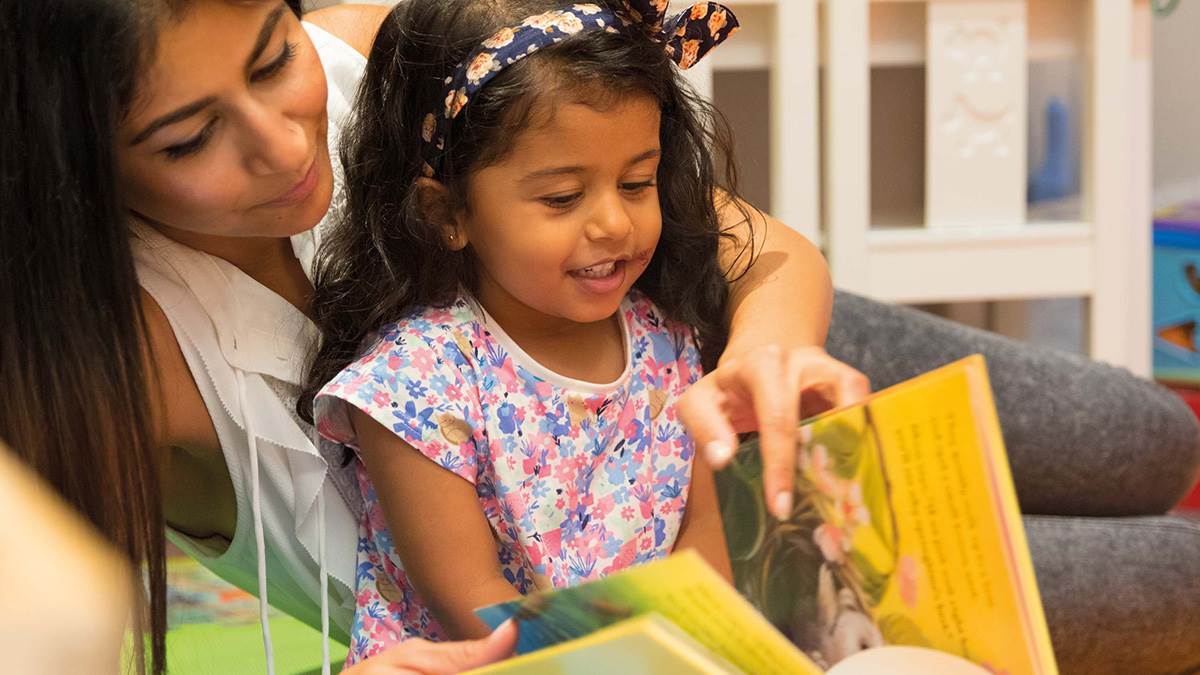Motivating children to read at home: 8 practical tips for parents
Published on: 15 May 2024
Teacher Peter Lambden shares his ideas for helping families read together.

For many parents, getting children to read at home can become a battle. Why? Learning to read takes effort. It’s difficult. As such, it’s easy for children to start seeing reading as nothing more than a chore to be ticked off. The key to changing this is to foster an interest in and love of books; to engage children in reading, we need to make it something for them to cherish.
I’ve been a teacher in Key Stage 1 for a long time, and parents often ask me for help with this. So I thought I’d share my top tips here for you, too!
Download and print out the reading tips
Eight Tips for Reading with Your Child
Tip 1: Talk to the teacher
Learning to read can be daunting for both children and parents in equal measure. It could be that you have no idea where to start, especially if reading doesn’t come easily to you, either. So don’t be afraid to ask your child’s teacher for help – after all, they’re the experts!
Most schools will host after-school sessions which parents can attend to get professional tips and suggestions.
If your child’s school doesn’t do this, you could suggest it. If your child has a willing teacher, you could ask that they make a video demonstrating how to read with a child, modelling good practice. If they can’t make a full video, perhaps they could record a summary of all their other tips and tricks.
Tip 2: Don’t go it alone
As a teacher, I open my classroom doors fifteen minutes early on Tuesdays and Thursdays and offer the space for parents to come in and read with their children. It’s like a little book club. When I do this, I don’t get involved, but I’m on hand for questions and guidance. The take-up is never overwhelmingly big, and for those needing help, it's a nice way to offer a little more support. Your child’s school may be able to do this. If it’s something they can’t offer, perhaps instead, you could reach out to other parents to find a way to share reading tips and book recommendations.

Tip 3: Continue to read to your child
It’s very important to regularly read using the books the school sends home with your child. But don’t forget to continue to read to your child, too. The shared attention on a book, the exploration together of different worlds and words, the snuggling up – all of this has long-term benefits for your child. If they’re struggling to read themselves, let them relax and enjoy you reading to them.
Don’t worry about what you’re reading, even old, ‘babyish’ favourites. If you’re not a reader yourself, just talk about the pictures together.
Many schools now send two books home: a reading book and a sharing book. It’s nice if the sharing book can be something the child has chosen – having the freedom to select the book for themselves does wonders for boosting engagement.
Tip 4: Ditch the reward charts
Plenty of research suggests that, though valuable at times, certain forms of rewards can quickly have a detrimental effect when things aren’t going well. I won’t go into the science of it, but for children who feel frustration, boredom, anger, or embarrassment when reading, rewards in the form of transactions, like stickers or treats in return for a set amount of reading,won’t help. Their reward needs to come from inside: the simple pleasure of reading, which a chart can’t make happen.
Tip 5: Reframe the emotions
Emotions are born of memories. Memories are forged by experiences. For people who love to read, somewhere deep in their memories are positive associations with books. Children haven’t had long enough to let these experiences grow yet.
I suggest using physical and sensory stimulation to help positive emotions grow. Examples include snuggling up with children in a duvet with hot chocolate and a tasty snack whenever they read their school book, lighting candles to provide comforting light and scents, and having something tactile to hold.
For many children, reading while stroking a familiar object or toy helps to make them feel calm and will help this feeling transfer to the experience of reading.
If you don’t love to read yourself, perhaps you can learn to enjoy looking at books with your child.

Tip 6: Piggyback on established memories
If there’s something a child already loves – a favourite place, person or thing – try bringing books into this experience. If a child loves swimming lessons, try arriving 10 minutes early and sitting in the observation deck with a book. If your child loves being on an outdoor walk, they could take a book and read a page whilst sitting on the banks of a calming stream.
On the subject of new experiences, try altering the time of the day that you read. One of the biggest successes I had was when a father started arriving at school ten minutes early and reading with his daughter in his van. She grew to love the new experience, and he was happy because he beat the school traffic!
Tip 7: Read with new people
Children could try taking their book on a visit to a favourite aunt or have a cool cousin read with them. They might even want to visit a neighbour and take their book along. The point of children reading at home is not only to practise the skill but also to promote familiarity with books and an interest in reading, so the person reading with them doesn’t always need to be an expert in how to instruct and coach.
Tip 8: Utilise the Reading Record
Use the reading record for communication, not just documenting when reading has taken place. Rather than waiting for parents' evening, you could use the reading record to ask for advice, further reading, or clarification if there’s anything you’re not sure about.
Above all, remember that the process of learning to read comes easier to some children than others. Each child who pushes back on reading at home has their own reason.
For some, it might be a case of not really liking it, and in this case, the above tips should help. But for others, there might be a deeper underlying issue that needs more targeted and direct intervention. So, although the tips here can hopefully be used by anyone, it’s important that teachers and parents also work closely together when supporting reading at home.
Books to help you get reading
Explore our primary booklists to help you and your child find your next book to share.
Brilliant books to read to primary school children
Reading books to children has lots of amazing benefits - even when they're learning to read (or can read) themselves. We think you'll love sharing these great titles.
Books about celebrations and festivals
These books are centred on celebrations such as birthdays, weddings and religious festivals. In each instance, it is family, friends and the wider community who make the occasion so special. Enjoy sharing them together!







